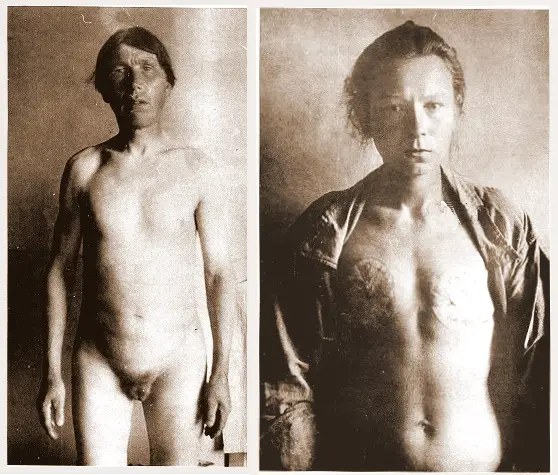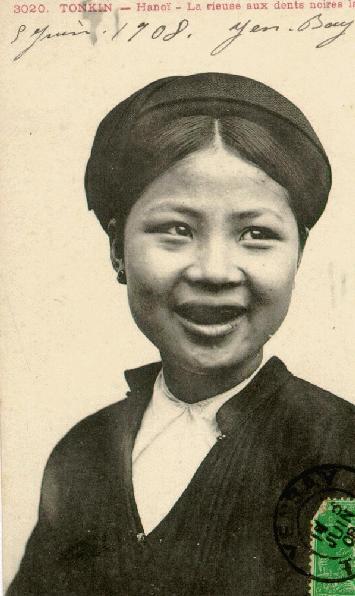(Disclaimer: This Article contains images that may affect you emotionally)
 koptsy was a cult shrouded in mystery and controversy, but its influence is still felt today. Having originated in the Russian Empire of the late 18th century, the cult practiced extreme asceticism and physical mutilation, including castration, all in an effort to achieve spiritual perfection. Despite condemnation from the Russian Orthodox Church and negative public opinion, Skoptsy persisted until its official disbandment in the early 20th century. In this article, we will explore the historical context of Skoptsy and its origin and expansion; delve into its practices and beliefs; assess reactions to it in Russia and beyond; and consider how it has managed to remain relevant even after its official dissolution. Share this article to learn more about the secret Russian cult that castrated its members!
koptsy was a cult shrouded in mystery and controversy, but its influence is still felt today. Having originated in the Russian Empire of the late 18th century, the cult practiced extreme asceticism and physical mutilation, including castration, all in an effort to achieve spiritual perfection. Despite condemnation from the Russian Orthodox Church and negative public opinion, Skoptsy persisted until its official disbandment in the early 20th century. In this article, we will explore the historical context of Skoptsy and its origin and expansion; delve into its practices and beliefs; assess reactions to it in Russia and beyond; and consider how it has managed to remain relevant even after its official dissolution. Share this article to learn more about the secret Russian cult that castrated its members!
Historical Context of Skoptsy
The Skoptsy cult, which translates to “castrated” in Russian, is a controversial religious sect that has its origins in the late 18th century Russian Empire. Founded by a peasant named Kondraty Selivanov, the cult practiced extreme asceticism and physical mutilation in an attempt to achieve spiritual perfection. The sect was an offshoot of the Old Believers sect of Russian Orthodoxy and was declared illegal by the government in 1834 due to its inflammatory beliefs and practices.
Kondraty Selivanov believed he had received divine revelations from God which instructed him to found this extreme religious sect as a path towards spiritual perfection. He drew heavily on teachings from Old Believer communities and developed his own interpretation of them, believing that physical suffering could lead to salvation. This included castration as a means of achieving spiritual purity and avoiding temptation. This practice meant that members of the Skoptsy were known as castrati or skoptsi – hence their name.
Despite condemnation from the Russian Orthodox Church and negative public opinion, Skoptsy managed to survive until its official disbandment in the early 20th century due to its secretive nature and underground nature. Even after being declared illegal by authorities, members still lived together in small villages dedicated solely to their beliefs.
The relevance of Skoptsy persists even today as it continues to inspire some people with its message of renouncing material possessions for higher ideals such as truth, justice, and faithfulness – all qualities which are highly sought-after in modern society. As such, it is important for us to understand more about this controversial religious sect so we can better appreciate why it has been able to persist despite all odds against it for centuries now.
Origin and Expansion of the Cult
Section 2: Origin and Expansion of the Cult The Skoptsy cult originated in the late 18th century in the Russian Empire, quickly gaining a following among those seeking a more extreme form of Christianity. The sect was known for its strict adherence to Christian teachings and its promise of salvation through physical mutilation and asceticism. It is believed that Kondraty Selivanov, a former Old Believer monk, first founded the sect in 1789 upon his discovery of an ancient text about castration as a spiritual act.
Members of this cult were known as Skoptsy or “castrates,” referring to their practice of self-mutilation, including castrating themselves or cutting off parts of their fingers. This practice was meant to represent their rejection of material possessions and worldly desires in favor of spiritual enlightenment. In addition to castration, they also practiced fasting, celibacy, and wearing sackcloth instead of traditional clothing.
Despite condemnation from both the Russian Orthodox Church and negative public opinion, the cult persisted until its official disbandment by Tsar Nicholas II in 1905. Despite this, members still lived together in small villages dedicated solely to their beliefs and it continues to inspire some people with its message of renouncing material possessions for higher ideals. During its peak it had over 100 000 followers across Russia and Ukraine before being outlawed by the government.
The Skoptsy’s influence has been felt throughout history despite now being mostly forgotten by society at large; authors such as Fyodor Dostoevsky were inspired by them while writing Crime & Punishment and War & Peace respectively. Their teachings have also influenced modern movements such as minimalism which encourage people to live simpler lives without excess belongings or material possessions – something which remains relevant even today!
Practices and Beliefs of Skoptsy
The cult of Skoptsy was renowned for its extreme asceticism and physical mutilation, such as castration. Their belief system held that Adam’s original sin was sex, so the best way to break free from this was by shunning sexual activities and procreation. Some members even went so far as to remove their genitalia in an attempt to completely repress their carnal desires.

This adamant adherence to strict rules extended further beyond just sexuality – with followers expected to fast regularly, abstain from animal products, and wear sackcloth instead of traditional clothing. Other restrictions included refraining from contact with anyone who didn’t adhere to the Skoptsy lifestyle, including family members.
Russia eventually banned the sect in 1834 due to its perceived immorality and potential danger it posed on public order. Though officially disbanded by 1905, it had become a powerful belief system for many people – a testament that can still be seen in modern movements like minimalism or authors like Dostoevsky who explored some of its teachings in his work. Today many may not understand why someone would choose such drastic measures for spiritual enlightenment but there is no denying that the Skoptsy movement left a mark on history that continues to inspire people even centuries later.
Reactions to Skoptsy in Russia and Beyond
Section 4: Reactions to Skoptsy in Russia and Beyond The Skoptsy sect was widely condemned by the Russian Orthodox Church and the general public for its extreme religious practices. The Church denounced the sect as a heresy, stating that its members were “a grave threat to public morals.” The government also took steps to outlaw the cult, with strict punishments being imposed on anyone found practicing it.
Despite this, some intellectuals in Russia and Europe were inspired by the cult’s teachings of renouncing material possessions for higher ideals. Fyodor Dostoevsky wrote about his admiration of the group in his book ‘The Brothers Karamazov’. Leo Tolstoy was also influenced by their beliefs and used them as inspiration for his novel ‘Resurrection’, which follows a lawyer who defends a member of the Skoptsy sect facing trial.
In addition to negative public opinion, members of the Skoptsky sect were persecuted by authorities in late 19th century Russia. They were exiled to Siberia and many were even given prison sentences for their beliefs. Despite this, there are still people today who are inspired by their teachings and practice elements of asceticism as part of their daily lives.
How Skoptsy Still Influences Society Today
Section 5: How Skoptsy Still Influences Society Today The teachings of the Skoptsy sect remain relevant in modern society, despite their controversial practice of physical mutilation and asceticism. Their advocacy of asexuality and androgyny, rejection of material possessions in favor of spiritual enlightenment, views on traditional family roles, body modification, and limitations of civilization continue to shape modern beliefs and practices.
Their belief that physical mutilation is necessary for spiritual perfection still resonates with many people today. According to an article in the Journal of Religion & Health, some contemporary individuals pursue extreme forms of body modification as a way to achieve spiritual clarity or freedom from societal conventions. As such, Skoptsy’s emphasis on rejecting material possessions for higher ideals can be seen in modern minimalism movements that advocate for living simply with few possessions.
Skoptsy’s views on gender roles also continue to have an impact today. In their time period, women were severely limited by traditional gender roles which emphasized domesticity and subordination to men. The cult challenged these norms through its practice of asexuality and rejection of traditional marriage rules – both male and female members were required to be celibate and could not marry each other even if they wanted to – which was seen as radical at the time. This influence is still evident today as more people are challenging traditional gender roles by embracing non-binary identities or rejecting heterosexual relationships altogether in favor of alternative lifestyles.
The teachings of Skoptsy offer an interesting perspective on our current society; while they do not condone violence or extremism, they urge us to consider how much power we give to institutions like governments or religions when it comes to controlling our lives – something that may still resonate with many people today who feel limited by social conventions or oppressive regimes. Ultimately, their message is one that continues to inspire us – that we should strive for spiritual perfection over material gain – no matter what obstacles we may face along the way.
Avid Writer with invaluable knowledge of Humanity!
Upcoming historian with over 30 million views online.
“You make your own life.”





